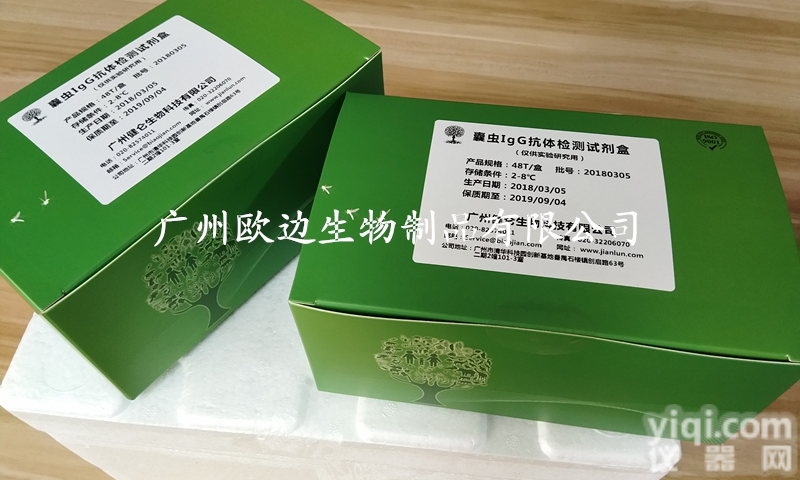人禽流感检测试剂盒(胶体金法)
广州健仑生物科技有限公司
广州健仑长期供应各种PCR试剂盒,主要代理进口和国产品Pai的流行病毒PCR检测试剂盒。例如:甲乙型流感病毒核酸检测试剂盒、黄热病毒核酸检测试剂盒、诺如病毒核酸检测试剂盒、登革病毒核酸检测试剂盒、基孔肯雅病毒核酸检测试剂盒、结核杆菌核酸病毒检测试剂盒、孢疹病毒核算检测试剂盒、西尼罗河病毒PCR检测试剂盒、呼吸道合胞病毒核酸检测试剂盒、冠状病毒PCR检测试剂盒等等。虫媒体染病系列、呼吸道病原体系列、发热伴出疹系列、消化道及食源感染系列。
广州健仑长期供应各种流感检测试剂,包括进口和国产的品Pai,主要包括日本富士瑞必欧、日本生研、美国BD、美国NovaBios、美国binaxNOW、英国clearview、凯必利、广州创仑等主流品Pai。
主要检测:甲型流感病毒检测试剂、乙型流感病毒检测试剂、甲乙型流感病毒检测试剂、A+B流感病毒检测试剂盒、流感病毒抗原快速检测卡、流感病毒抗体快速检测试剂盒、流感快速检测试剂 c1c2。
人禽流感检测试剂盒(胶体金法)

我司还提供其它进口或国产试剂盒:登革热、疟疾、流感、A链球菌、合胞病毒、腮病毒、乙脑、寨卡、黄热病、基孔肯雅热、克锥虫病、违禁品滥用、肺炎球菌、军团菌、化妆品检测、食品安全检测等试剂盒以及日本生研细菌分型诊断血清、德国SiFin诊断血清、丹麦SSI诊断血清等产品。
欢迎咨询
欢迎咨询
想了解更多的产品及服务请扫描下方二维码:

【公司名称】 广州健仑生物科技有限公司
【市场部】 欧
【】
【腾讯 】
【公司地址】 广州清华科技园创新基地番禺石楼镇创启路63号二期2幢101-103室

细菌和其它原核生物一样,没有核膜,DNA集中在细胞质中的低电子密度区,称核区或核质体(nuclear body)。细菌一般具有1-4个核质体,多的可达20余个。核质体是环状的双链DNA分子,所含的遗传信息量可编码2000-3000种蛋白质,空间构建十分精简,没有内含子。由于没有核膜,因此DNA的复制、RNA的转录与蛋白的质合成可同时进行,而不像真核细胞那样在生化反应在时间和空间上是严格分隔开来的。
每个细菌细胞约含5000-50000个核糖体,部分附着在细胞膜内侧,大部分游离于细胞质中。细菌核糖体的沉降系数为70S,由大亚单位(50S)与小亚单位(30S)组成,大亚单位含有23SrRNA与30多种蛋白质,小亚单位含有16SrRNA与20多种蛋白质。30S的小亚单位对四环素与链霉素很敏感,50S的大亚单位对红霉素与氯霉素很敏感。
细菌核区DNA以外的,可进行自主复制的遗传因子,称为质粒(plasmid)。质粒是裸露的环状双链DNA分子,所含遗传信息量为2-200个基因,能进行自我复制,有时能整合到核DNA中去。质粒DNA在遗传工程研究中很重要,常用作基因重组与基因转移的载体。
胞质颗粒是细胞质中的颗粒,起暂时贮存营养物质的作用,包括多糖、脂类、多磷酸盐等。
拟核
拟核(nucleoid)存在于原核生物,是没有由核膜包被的细胞核,也没有染色体,只有一个位于形状不规则且边界不明显区域的环形DNA分子。内含遗传物质。里面的核酸为双股螺旋形式的环状DNA,且同时具有多个相同的复制品。
其他结构
许多细菌的Z外表还覆盖着一层多糖类物质,其中边界明显的称为荚膜,如肺炎球菌,边界不明显的称为粘液层(slime layer),如葡萄球菌。荚膜对细菌的生存具有重要意义,细菌不仅可利用荚膜抵御不良环境;保护自身不受白细胞吞噬;而且能有选择地粘附到特定细胞的表面上,表现出对靶细胞的专一攻击能力。例如,伤寒沙门杆菌能专一性地侵犯肠道淋巴组织。细菌荚膜的纤丝还能把细菌分泌的消化酶贮存起来,以备攻击靶细胞之需。
鞭毛是某些细菌的运动器官,由一种称为鞭毛蛋白(flagellin)的弹性蛋白构成,结构上不同于真核生物的鞭毛。细菌可以通过调整鞭毛旋转的方向(顺时针和逆时针)来改变运动状态。
菌毛是菌体表面极其细的蛋白纤维,须用电镜观察,特点是:细、短、直、硬、多。菌毛与细菌运动无关,根据形态、结构和功能,可分为普通菌毛和性菌毛两类。前者与细菌吸附和侵染宿主有关,后者为中空管子,与传递遗传物质有关。
Bacteria, like other prokaryotes, have no nuclear membrane, and DNA is concentrated in the low electron density regions in the cytoplasm, called the nuclear region or the nuclear body. Bacteria generally have 1-4 nucleosomes, up to more than 20. Nucleosomes are circular, double-stranded DNA molecules that contain a genetic code of 2,000 to 3,000 proteins and are constructed in a very compact space with no introns. Since there is no nuclear membrane, DNA replication, RNA transcription and protein synthesis can be carried out simultaneously, unlike eukaryotic cells in the biochemical reactions in the space and time is strictly separated.
Each bacterial cell contains about 5000-50000 ribosomes, some attached to the inside of the cell membrane, the majority of free in the cytoplasm. Bacterial ribosome sedimentation coefficient of 70S, by the large subunit (50S) and small subunit (30S) composition, the large subunit contains 23SrRNA and 30 kinds of protein, the small subunit contains 16SrRNA and 20 kinds of proteins. Small subunits of 30S are sensitive to tetracycline and streptomycin, and large subunits of 50S are sensitive to erythromycin and chloramphenicol.
Genetic factors other than DNA in the bacterial nuclear region that replicate autonomously are called plasmids. Plasmids are naked, circular, double-stranded DNA molecules that contain between 2 and 200 genes of genetic information and are capable of self-replication, sometimes integrated into nuclear DNA. Plasmid DNA is very important in genetic engineering and is often used as a vector for gene recombination and gene transfer.
Cytoplasmic granules are particles in the cytoplasm, from the temporary storage of nutrients, including polysaccharides, lipids, polyphosphates and so on.
To be nuclear
Nucleoids exist in prokaryotes, which are nuclei that are not covered by the nuclear membrane and have no chromosomes. There is only one circular DNA molecule located in an irregularly shaped area with an insignificant boundary. Contains genetic material. The nucleic acid inside is circular DNA in the form of a double-stranded helix and has multiple identical copies at the same time.
Other structures
The outermost surface of many bacteria is also covered with a layer of polysaccharides, the borders of which are clearly called capsular membranes, such as pneumococcal bacteria, and slime layers, such as staphylococci, whose boundaries are not clearly known. Capsules are important for the survival of bacteria, which not only utilize the capsule against unfavorable environments, protect themselves from leukocyte engraftment, but also selectively adhere to the surface of specific cells, displaying a specific attack on target cells ability. For example, Salmonella typhi can specifically invade intestinal lymphoid tissue. Bacterial capsular fibrils also store the digestive enzymes secreted by the bacteria in preparation for attack on target cells.
Flagella, the movement organ of certain bacteria, consists of an elastin called flagellin that is structurally different from the eukaryotic flagella. Bacteria can change the state of motion by adjusting the direction of rotation of the flagella (clockwise and counterclockwise).
Pili is a very thin surface of bacterial protein fibers, to be observed by electron microscopy, characterized by: thin, short, straight, hard, and more. Pili and bacterial movement has nothing to do, according to the shape, structure and function, can be divided into two types of ordinary pili and pili. The former is related to bacterial adsorption and infection of the host, the latter is a hollow tube, and the transmission of genetic material.
 积水 人禽流感检测试剂盒(胶体金法)
积水 人禽流感检测试剂盒(胶体金法)
 人类免疫缺陷病毒抗体检测试剂盒(条/卡)(胶体金法)
人类免疫缺陷病毒抗体检测试剂盒(条/卡)(胶体金法)
 MOR尿液试纸 多种药物滥用检测试剂盒套装(胶体金)
MOR尿液试纸 多种药物滥用检测试剂盒套装(胶体金)
 创仑试纸 多种药物滥用检测试剂盒套装(胶体金)
创仑试纸 多种药物滥用检测试剂盒套装(胶体金)
 A型链球菌 A型链球菌快速检测试剂盒价格(胶体金法)
A型链球菌 A型链球菌快速检测试剂盒价格(胶体金法)
 非洲猪瘟快速诊断试剂盒(免疫胶体金)
非洲猪瘟快速诊断试剂盒(免疫胶体金)
 HAT检测试剂盒价格(胶体金法)
HAT检测试剂盒价格(胶体金法)
 CORTEZ 血液肌红蛋白检测试剂盒(快速胶体金法)
CORTEZ 血液肌红蛋白检测试剂盒(快速胶体金法)
 购买进口产品 血液检测疟原虫试剂盒(快速胶体金法)
购买进口产品 血液检测疟原虫试剂盒(快速胶体金法)
 美国进口CORTEZ 血液检测疟原虫试剂盒(快速胶体金法)
美国进口CORTEZ 血液检测疟原虫试剂盒(快速胶体金法)
 胶体铁黏多糖染色试剂盒/胶体铁黏多糖染色试剂盒/胶体铁黏多糖染色试剂盒
胶体铁黏多糖染色试剂盒/胶体铁黏多糖染色试剂盒/胶体铁黏多糖染色试剂盒
 改良Hale胶体铁黏多糖染色试剂盒/改良Hale胶体铁黏多糖染色试剂盒/改良Hale胶体铁黏多糖染色试剂盒
改良Hale胶体铁黏多糖染色试剂盒/改良Hale胶体铁黏多糖染色试剂盒/改良Hale胶体铁黏多糖染色试剂盒